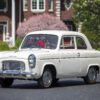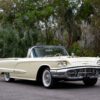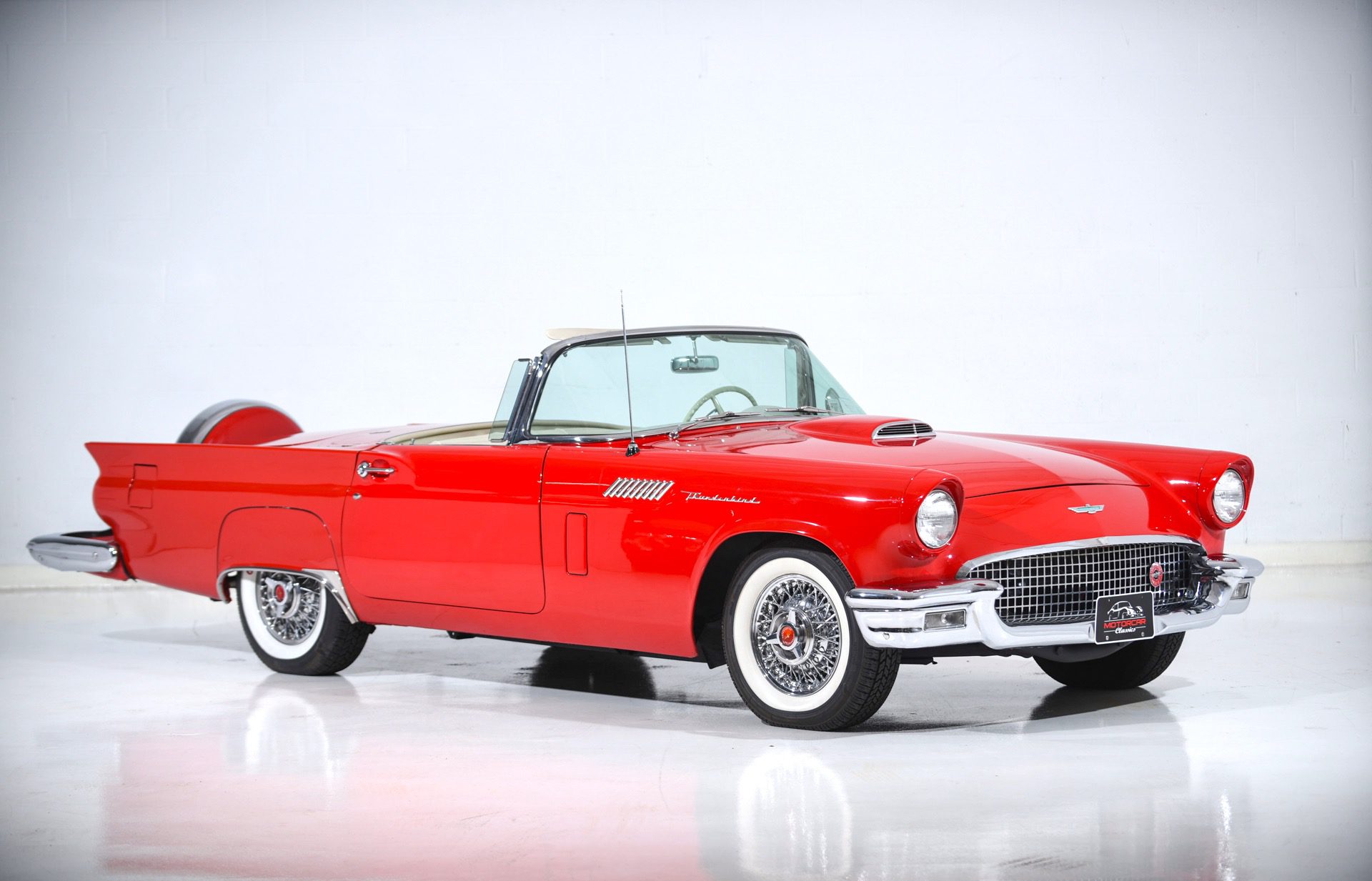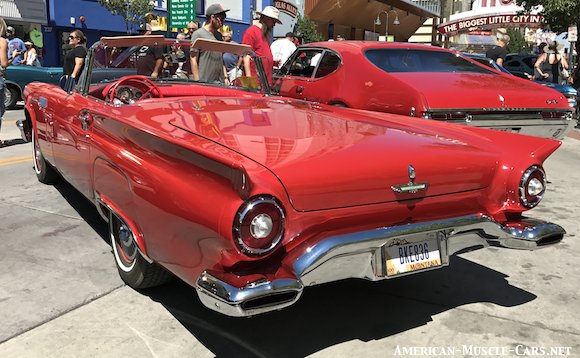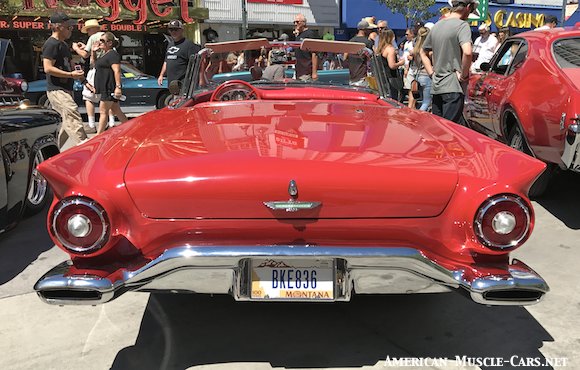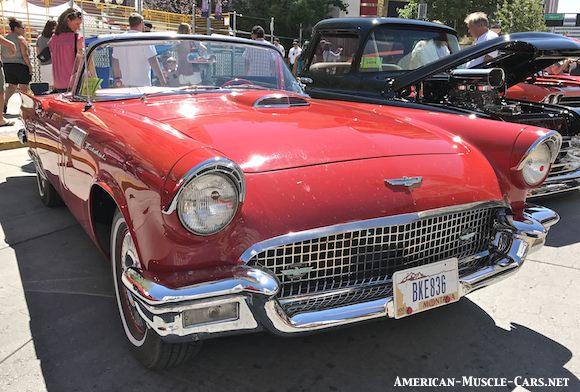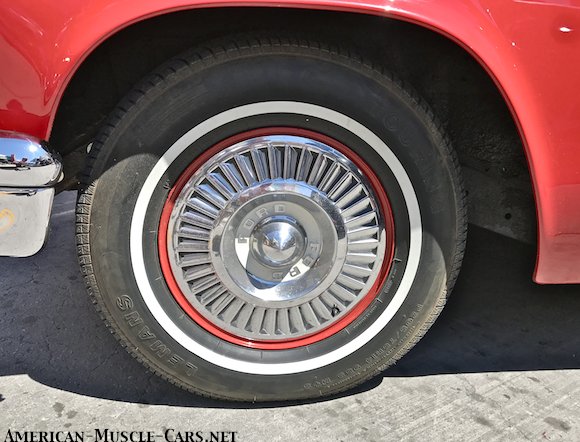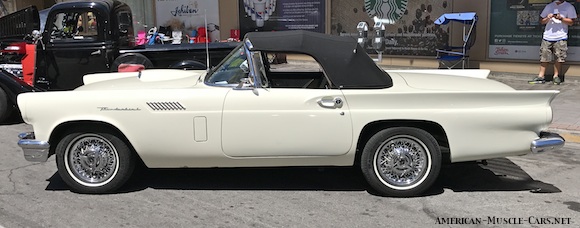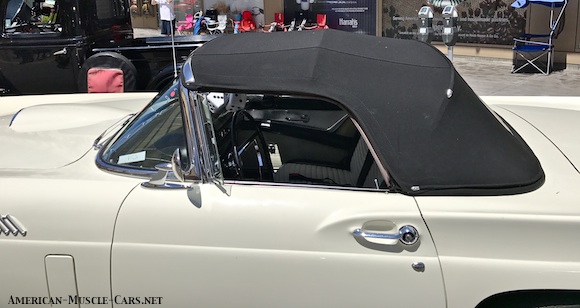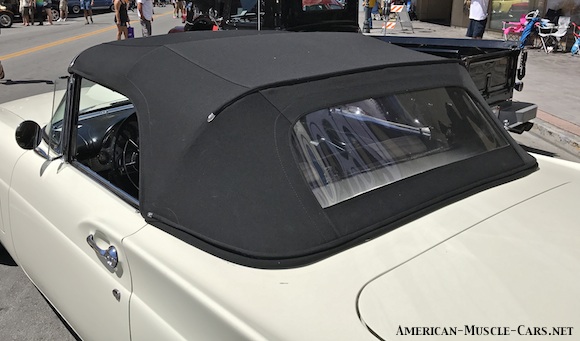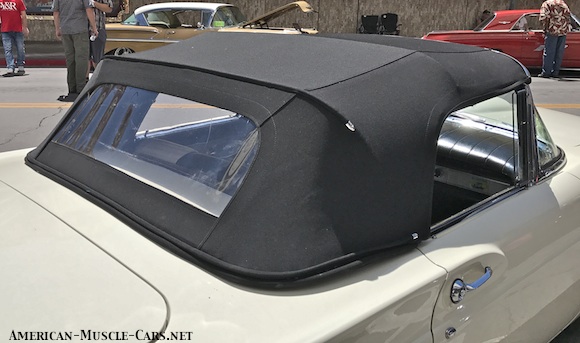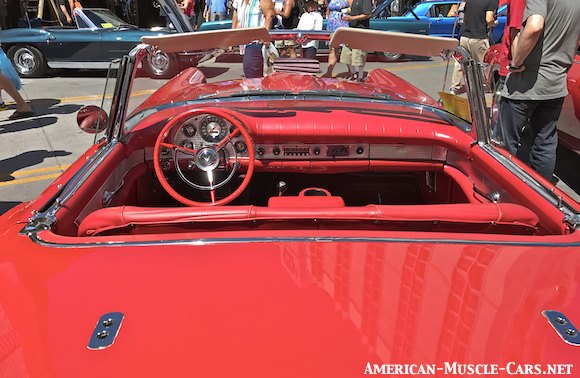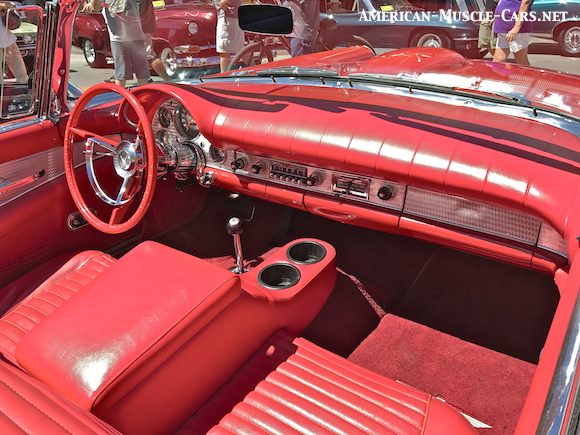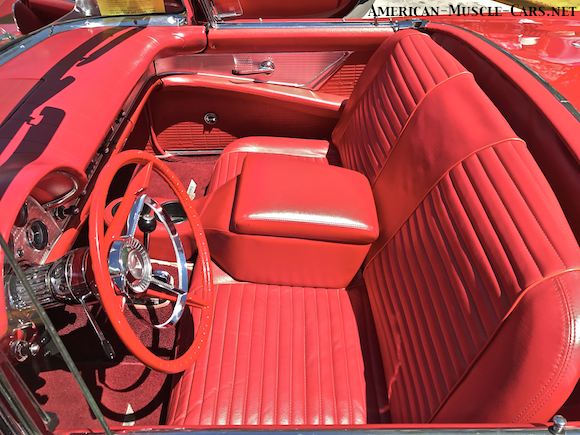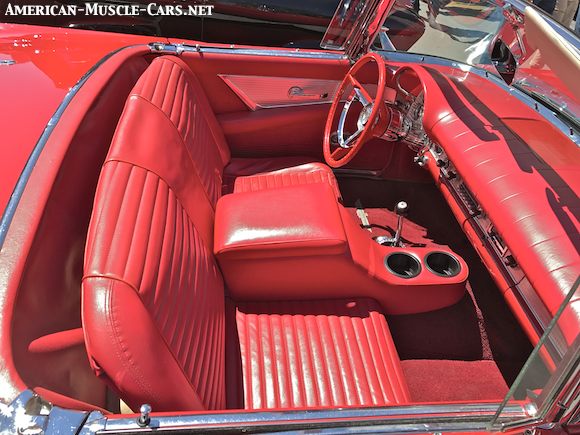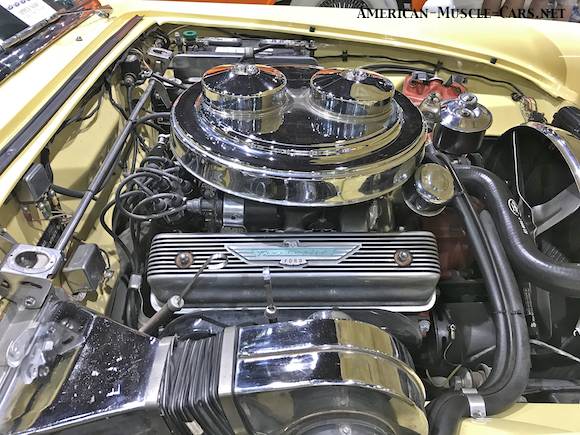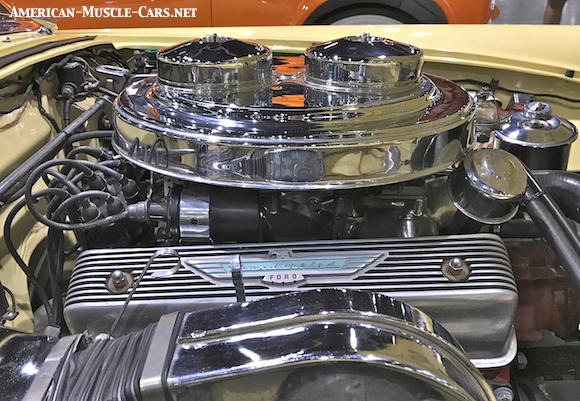1957 Ford Thunderbird

1957 FORD THUNDERBIRD BACKGROUND
Chevrolet had just launched the Corvette in 1953, while MGs, Triumphs and Jaguars began to flood in from England into the welcome arms of an eager American market. Ford recognized this as a trend they wanted a part of. But, with some reservations. The ‘bean counters’ at Ford determined that the market for a ‘pure sports car’ was limited at best, and they saw the early Corvettes struggling to make sales, so the decided to define the new 1955 Ford Thunderbird not as a ‘sports car’ per se, but as what they called a “personal car”. But how did it all start? The story goes that Ford general manager Lewis Crusoe was visiting the 1951 Paris Auto Show with Ford designer George Walker, admiring the European flavor for design, and the sports cars they were building at the time. Crusoe turned to Walker and asked “Why can’t we have something like this?” Walker stretched the truth when he said “Oh, but we do”. What he was referring to was a backroom project for a 2-seat sports car following the Corvette and British molds, that was languishing in the design department for lack of support from Ford leadership. Suddenly this sounded like a green light to Walker, who then called back to Dearborn and told them to the project into high gear. With the new mandate, a fundamental change was made away from the crudeness of the Corvette and the British sports cars, with their clunky tops, and leaky side curtains instead of windows. Ford wisely decided to take the new T-Bird upmarket, and bestow it with all the things American buyers were coming to expect in a premium car. And they offered it with a wide range of comfort and convenience options, like power steering and brakes, power windows, even a power seat. It would be years before options like this were available in a Corvette. It must have worked, because in its first year on the market as a new nameplate, the ’55 T-Bird sold 16,155 units to the Corvette’s 700 in 1955 (and only 300 in its debut year, 1953). So, the lovely Thunderbird was off and running, the start of a brilliant career.
1957 Ford Thunderbird CONVERTIBLE TOP
1957 Ford Thunderbird INTERIORS
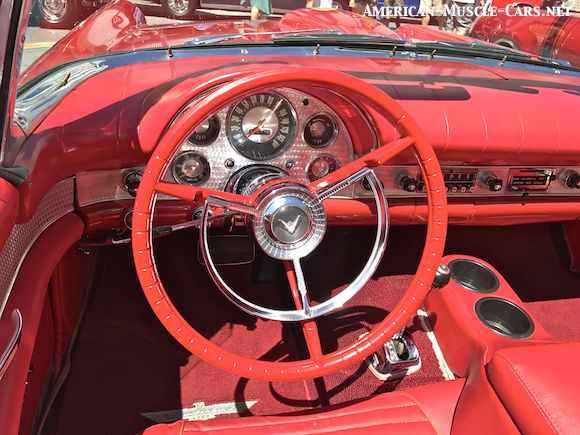
1957 Ford Thunderbird ENGINES
312 V8 w/single 4-barrel = 245 hp

E-code 312 V8 w/dual 4-barrels = 270 hp
Supercharged 312 V8 = 300 hp
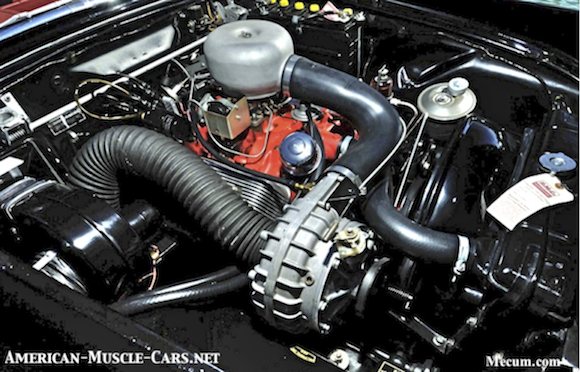
1957 Ford Thunderbird SPECIFICATIONS
| Wheelbase
Length Width Height Track, front Track, rear Curb weight Brakes, front Brakes, rear Tire size, standard ENGINE OPTIONS: 292 V8 w/1-4bbl 312 V8 w/1-4bbl 312 V8 w/2-4bbl E-code 312 supercharged V8 w/1-4bbl |
102.0″ / 2591mm
181.4″ / 4608mm 71.3″ / 1811mm 51.6″ / 1311mm 56.0″ / 1422mm 56.0″ / 1422mm 3310 lbs / 1500 kg 279mm drums 279mm drums 7.50″ X 14″ 206 hp @ 4500 rpm 245 hp @ 4500 rpm 270 hp @ 4800 rpm 300 hp @ 4800 rpm |
297 lb-ft @ 2700 rpm
332 lb-ft @ 3200 rpm 336 lb-ft @ 3600 rpm 439 lb-ft @ 2600 rpm |
A WORK IN PROGRESS
In our efforts to complete our online index, and make this the world’s greatest website about American Muscle Cars, we’re building pages as fast as we can. The first thing we add are the pictures. Then come the specs, and then the history. So, if you see a page that just has only pictures on it, please check back in a few weeks to see if we have it done. Thanks for your patience. And thanks for visiting /American-Muscle-Cars.net. Please tell your friends about us.


